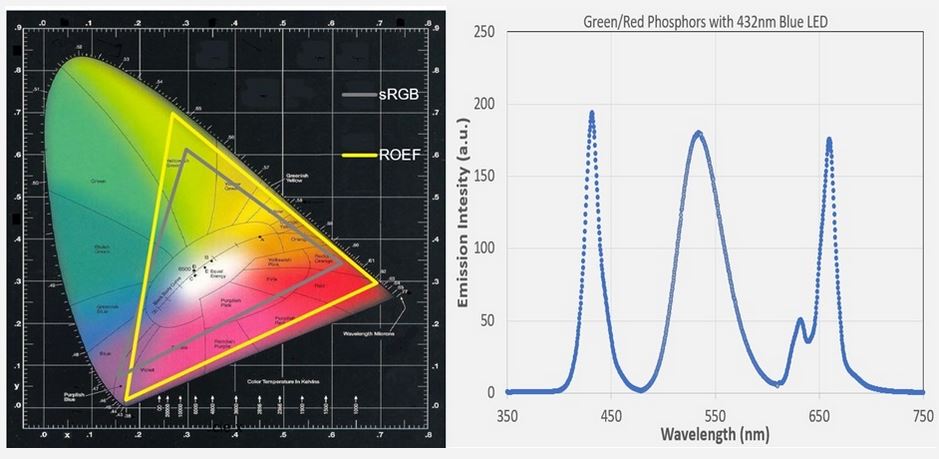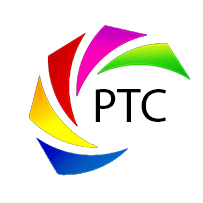Display Materials
Fabricating an electronic display requires many different materials. Phosphors are among the most common light emitting materials in flat panel displays and display backlighting. More traditional displays rely heavily on various phosphor technologies for light and image generation. Examples include cathode ray tubes (CRTs), plasma displays (PDPs), field emission displays (FEDs), and electroluminescent (EL) displays. Modern flat panel displays, such as liquid crystal displays (LCDs), also use phosphors in their backlights. Many microLED and flexible display technologies also rely on phosphor materials to down-convert blue light from a microLED device into red/green or white light.
The phosphor-based backlight can deliver a high quality color gamut, seen in high-end display products, when combined with standard LCD color filters. LEDs, phosphors, and color filters deliver more saturated colors and further optimize the color gamut. A similar level of performance is also possible for microLED display technology. Particle size can be made small enough to enable a wide range of micro printing. However, there is always a tradeoff between resolution, color quality, and luminous efficiency or brightness.
Phosphor materials can also be applied to a display device as thin films. Such a product functions as a color or brightness optical enhancement film. The graphs below show examples of possible color gamut using a red/green combination of phosphor enhancement films coupled to a blue LED. Only two phosphors were used in these films, a green and a red phosphor. For microLED displays, phosphors can be used to enable full-color RGB devices with superior properties (brightness and stability) compared to quantum dots (QDs). Unlike conventional QDs, phosphors are generally environmentally-friendly and do not contain any heavy metals.

Phosphor-based Optical Enhancement for High Color Gamut Displays
